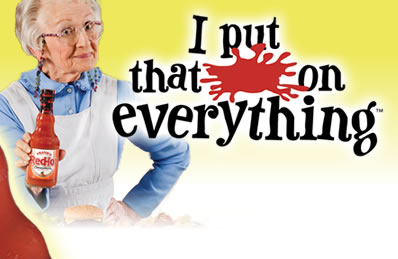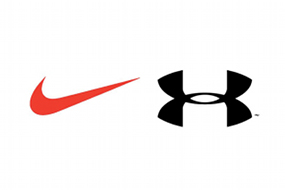If the merry-go-round of pitches and creative ‘genius’ was already stale in 1965, what is the agency’s role going to look like in the era of Advertising 2.0?  When it comes to the brilliant storylines in Mad Men, I’m hopelessly addicted. I can’t look away. As a bonus, Mad Men comes with historical perspective – in terms of social norms and rituals, but also in terms of how the advertising industry works. In terms of how far we’ve come in the last 40 years, social progress has been amazing. When it comes to the actual business of ad agencies, so many of the tired old memes and themes linger on to this day, it can be downright depressing. In a recent episode (510), Christmas Waltz, the agency is feeling the financial heat from a client spending hiatus (Mohawk Airlines). But not all the news is bad. They’re getting ready to pitch new business to Jaguar. It’s not exactly General Motors, but Draper Cooper Sterling Pryce doesn’t yet “have a car,” and will be the smallest agency in the pitch proceedings. Pete Campbell is desperate to get this “car.” In the partners’ meeting, fossil Bert Cooper seems distracted, and finally blurts out a typical non-sequitur: “They’re lemons! They never start.” Don Draper is too cynical to jump on board Pete’s pitch train at first, but he seems to warm to the idea when this new mission (the umpteenth of too many to remember) gives him something spirited to do (spend all of his time in the office, like he used to) now that he’s quarrelling with his young wife (who used to spend all of her time there, with him).
When it comes to the brilliant storylines in Mad Men, I’m hopelessly addicted. I can’t look away. As a bonus, Mad Men comes with historical perspective – in terms of social norms and rituals, but also in terms of how the advertising industry works. In terms of how far we’ve come in the last 40 years, social progress has been amazing. When it comes to the actual business of ad agencies, so many of the tired old memes and themes linger on to this day, it can be downright depressing. In a recent episode (510), Christmas Waltz, the agency is feeling the financial heat from a client spending hiatus (Mohawk Airlines). But not all the news is bad. They’re getting ready to pitch new business to Jaguar. It’s not exactly General Motors, but Draper Cooper Sterling Pryce doesn’t yet “have a car,” and will be the smallest agency in the pitch proceedings. Pete Campbell is desperate to get this “car.” In the partners’ meeting, fossil Bert Cooper seems distracted, and finally blurts out a typical non-sequitur: “They’re lemons! They never start.” Don Draper is too cynical to jump on board Pete’s pitch train at first, but he seems to warm to the idea when this new mission (the umpteenth of too many to remember) gives him something spirited to do (spend all of his time in the office, like he used to) now that he’s quarrelling with his young wife (who used to spend all of her time there, with him).
What’s depressing? Well, even in 1965 there was a palpable sense that the merry-go-round of “our next victory is more of the same: pitch, creative, client, bill, haggle, keep selling, client malaise, pitch another, lather, rinse, repeat” was getting stale. No agency getting the upper hand, clients seeing only diminishing returns from mass media advertising. Clients, already disillusioned, seeking to reclaim the magic of mass media glory days gone by. And by extension, the magic-makers in their offices seeking to re-stoke the adrenaline rush of the early days by applauding small wins in all-hands meetings and staging exaggerated teamwork exercises, such as working through Christmas and New Years for some speculative business. The other constant – true in 1955, losing credibility by 1965, and patently ridiculous by now – is the premise that your agency’s collection of brilliant strategists, genius creatives, and market researchers will somehow create the “perfect pitch” that will pull business away from the other agency’s similar group. And that this perfect campaign will magically transform the client’s business and boost profits (after paying the agency, in-house overhead, and bloated mass media costs). All too often, the end result was little more than to flatter the buyers that they were involved in something larger and more inspiring than a cold calculation of the ROI on dollars invested in new customer acquisition. Ever hear anyone say “ROI” in a meeting with Don Draper? In short, as early as 1965, novelty in advertising as a way to build markets (and win business for agencies, to make men like Don Draper even wealthier) was getting old. Madison Avenue was already getting stuck in a rut. It would be the last generation of “Mad Men” – those seemingly infallible gods of persuasion who didn’t even have to look at the price of their exclusive office rent. (As we know from Sterling Cooper’s machinations, that luxury was short-lived even for many of them, as upstart agencies splintered away from parent companies in the hopes of keeping more money for the new principals, with the promise of yet more novelty – something the clients immediately smelled as an opportunity to get the same quality for less money.) A further insult to our collective self-respect is the persistent notion that the advertising industry is about being nefariously talented in the art of selling heretofore undifferentiatable concoctions of sugar, food coloring, and cheap ingredients to buyers so stupid as to be “influenced by advertising,” no matter what. Somehow, the average consumer is supposed to be unable to differentiate between the kind of product (like WD-40, when it came out) that generates true word-of-mouth by devotees, and thus rapid sales increases, and something like Frank’s Red Hot sauce, an aging brand that is currently being revived, pointlessly, with a campaign portraying little old ladies “shockingly” telling people “I put that #$%^ on everything.” You put that $%^& on everything? Really?  (While you’re asking questions like “really?” you might also ask yourself whether the company has ever changed the formula for the sauce, how the production facilities work, how the peppers are farmed, how today’s peppers look, feel, and taste vs. the peppers of 1918, etc. If you’re a real data maven, you can even look up stats for their UK-based holding company, Reckitt Benckiser, a $25BN conglomerate. The only little old ladies that really appreciate Frank’s Red Hot probably like its current dividend yield of 3.67%, and the 10-year appreciation in Reckitt Benckiser’s stock price: 181%. Annualized, that’s 10.87%, a superior rate of return by any measure.) But that’s an apt analogy for how the modern (and by modern, I mean the 2012 version of the creative agency that hasn’t changed its main modus operandi since 1955) ad agency operates. No matter how circumstances may be changing in the actual economy, no matter how radically clients’ true needs, products, and data analysis capabilities may have been transformed, the modern 1955/2012 agency still “puts that @#$% on everything.” Flip on the TV, and you get to watch that @#$%. I’m not done with these guys yet! If you take a visit to Reckitt Benckiser’s website – they also make familiar brands like Calgon, Finish, Clearasil, Durex, and Easy-Off – and you find that the company is actually loud and proud about the size of its media budget, the “largest in the industry”! “While others are pulling back,” boasts the copy, “RB is boldly pushing ahead and giving its brands the attention they deserve.” (The attention they “deserve,” mind you, has largely been bought with decades of previous big-media investments. We deserve it more than ever because we already overpaid for it!) They actually cite a figure: it’s 12.4% of net revenues, adding: “That’s visionary.” You can’t make this @#$% up. Personally, I’m a big fan of Woolite. But I refuse to “put that @#$% on everything,” no matter how many TV spots I have to help RB pay for. Is this all just random bashing? Am I basing my critique of high-media-spend-to-revenues ratios on science, or superstition? It’s not easy to prove either way. But it’s easy enough to show that you can achieve similar or better results with far lower spends. Someone might say: “This is just how it works. As it worked for Nike, today it works for Under Armour. That’s how you build a large brand, even one that starts out as a subversive
(While you’re asking questions like “really?” you might also ask yourself whether the company has ever changed the formula for the sauce, how the production facilities work, how the peppers are farmed, how today’s peppers look, feel, and taste vs. the peppers of 1918, etc. If you’re a real data maven, you can even look up stats for their UK-based holding company, Reckitt Benckiser, a $25BN conglomerate. The only little old ladies that really appreciate Frank’s Red Hot probably like its current dividend yield of 3.67%, and the 10-year appreciation in Reckitt Benckiser’s stock price: 181%. Annualized, that’s 10.87%, a superior rate of return by any measure.) But that’s an apt analogy for how the modern (and by modern, I mean the 2012 version of the creative agency that hasn’t changed its main modus operandi since 1955) ad agency operates. No matter how circumstances may be changing in the actual economy, no matter how radically clients’ true needs, products, and data analysis capabilities may have been transformed, the modern 1955/2012 agency still “puts that @#$% on everything.” Flip on the TV, and you get to watch that @#$%. I’m not done with these guys yet! If you take a visit to Reckitt Benckiser’s website – they also make familiar brands like Calgon, Finish, Clearasil, Durex, and Easy-Off – and you find that the company is actually loud and proud about the size of its media budget, the “largest in the industry”! “While others are pulling back,” boasts the copy, “RB is boldly pushing ahead and giving its brands the attention they deserve.” (The attention they “deserve,” mind you, has largely been bought with decades of previous big-media investments. We deserve it more than ever because we already overpaid for it!) They actually cite a figure: it’s 12.4% of net revenues, adding: “That’s visionary.” You can’t make this @#$% up. Personally, I’m a big fan of Woolite. But I refuse to “put that @#$% on everything,” no matter how many TV spots I have to help RB pay for. Is this all just random bashing? Am I basing my critique of high-media-spend-to-revenues ratios on science, or superstition? It’s not easy to prove either way. But it’s easy enough to show that you can achieve similar or better results with far lower spends. Someone might say: “This is just how it works. As it worked for Nike, today it works for Under Armour. That’s how you build a large brand, even one that starts out as a subversive or niche one at first.” Maybe, but what’s Lululemon Athletica’s comparable spend? How much better could Under Armour have done if it had repurposed 75% its traditional media budget for any number of other marketing and product development purposes? The two companies’ financial fortunes are easily compared here They’re pretty comparable in a lot of ways. It’s just that one of the two companies – the one that spends a lot less on traditional advertising – has done significantly better than the other (and in a significantly shorter time frame since going public). All scapegoating aside, maybe they can learn. Maybe even companies like Reckitt Benckiser will eventually see the wisdom of “pulling back” from these wasteful spending patterns; soon, they might even feel silly for bragging about them. It’s only a matter of time. When it comes to products like Frank’s Red Hot, granted, pulling back probably isn’t an option. It really is undifferentiated red goop. No one is going to grab a few extra bottles from the grocery store after tasting it once, call Mom, and say “Mamma, you should really put this shit on everything!” Stop spending on media, and Frank’s Red Hot crawls back under its rock. Change is coming, in any case. Some conglomerates, many of us think, are addressing those changes far too gradually. Procter & Gamble recently drew attention for announcing large cuts in its traditional advertising budgets. But on closer inspection, the announcement looks more like a government announcement than one from a private company. It’s being phased in over five years and merely slows the spend growth rate rather than constituting an actual cut. Indeed, larger planned operations expense cuts and broader headcount downsizing will dwarf P&G’s ad spend restraint in terms of actual dollars.
or niche one at first.” Maybe, but what’s Lululemon Athletica’s comparable spend? How much better could Under Armour have done if it had repurposed 75% its traditional media budget for any number of other marketing and product development purposes? The two companies’ financial fortunes are easily compared here They’re pretty comparable in a lot of ways. It’s just that one of the two companies – the one that spends a lot less on traditional advertising – has done significantly better than the other (and in a significantly shorter time frame since going public). All scapegoating aside, maybe they can learn. Maybe even companies like Reckitt Benckiser will eventually see the wisdom of “pulling back” from these wasteful spending patterns; soon, they might even feel silly for bragging about them. It’s only a matter of time. When it comes to products like Frank’s Red Hot, granted, pulling back probably isn’t an option. It really is undifferentiated red goop. No one is going to grab a few extra bottles from the grocery store after tasting it once, call Mom, and say “Mamma, you should really put this shit on everything!” Stop spending on media, and Frank’s Red Hot crawls back under its rock. Change is coming, in any case. Some conglomerates, many of us think, are addressing those changes far too gradually. Procter & Gamble recently drew attention for announcing large cuts in its traditional advertising budgets. But on closer inspection, the announcement looks more like a government announcement than one from a private company. It’s being phased in over five years and merely slows the spend growth rate rather than constituting an actual cut. Indeed, larger planned operations expense cuts and broader headcount downsizing will dwarf P&G’s ad spend restraint in terms of actual dollars.  A host of other consumer products conglomerates (Unilever, Kraft, Pepsico, Coca-Cola) have also recently committed to maintaining or increasing traditional media spending, even in the midst of other cost control measures and in some cases serious company-wide downsizing exercises. Yet the expected budget shift to digital spaces is undergoing serious hiccups, with the recent pullout of GM from their relatively small Facebook spend representing just one example. If you judge by the current stock price premiums of many brands, and the strange time warp that the largest brand stewards remain locked into when it comes to overspending on defending them, the Brand Bubble isn’t bursting just yet. But curious and info-savvy consumers are changing their behavior over time. Individual categories and individual products stand to face serious threats, and old-tymey bullhorn marketing can’t indefinitely withstand the info-savvy peer-sharing behaviors of the digital generation. (That’s why, for instance, online reputation software companies are red hot. Some startups in the space already have Fortune 500 companies placing large orders for solutions that have yet to be built, for problems it was never in these companies’ DNA to anticipate.) Advertising today is to consumer awareness what penicillin is to garden-variety bacteria. “Superbugs” resist antibiotics now. Analogously, most consumers have become immune to harping by brands. They’ve grown thick shells overtop of the buttons advertisers used to press. Many cockroaches could survive global thermonuclear annihilation; many consumers could resist an ad budget of $50 trillion. The safety and cachet of brands still means a lot in some circumstances, but where those virtues are trumped by other attributes valued by customers, the consumers of advertising will be non-responsive to the vast majority of repetitive brand exercises. Seth Godin long ago made the case (in Permission Marketing, 1999, and Purple Cow, 2003) that consumers are now frantically fleeing advertising just as fast as you can find new ways to shovel it out. The only possible antidote to that, he argued, was either permission or remarkability. The “TV-industrial complex” of 1950-1975 is dead, even if many advertisers wish it weren’t. As search marketers, we believe that another key to penetrating the consciousnesses of cockroach-shelled prospects is “relevance.” Advocates of social media would add “peer respect.” Some purists argue for “transparency” and “authenticity,” whereas Godin maintains that All Marketers (still) Tell Stories . So what’s next? Can advertising agencies play a role in steering advertisers through the Chaos Scenario that is unfolding now? Can the “agency of the future” do so? What would that look like? What should agencies be offering? What should they be thinking about? I’ll ask the questions and provide 99.44% true answers in the next post in this series.
A host of other consumer products conglomerates (Unilever, Kraft, Pepsico, Coca-Cola) have also recently committed to maintaining or increasing traditional media spending, even in the midst of other cost control measures and in some cases serious company-wide downsizing exercises. Yet the expected budget shift to digital spaces is undergoing serious hiccups, with the recent pullout of GM from their relatively small Facebook spend representing just one example. If you judge by the current stock price premiums of many brands, and the strange time warp that the largest brand stewards remain locked into when it comes to overspending on defending them, the Brand Bubble isn’t bursting just yet. But curious and info-savvy consumers are changing their behavior over time. Individual categories and individual products stand to face serious threats, and old-tymey bullhorn marketing can’t indefinitely withstand the info-savvy peer-sharing behaviors of the digital generation. (That’s why, for instance, online reputation software companies are red hot. Some startups in the space already have Fortune 500 companies placing large orders for solutions that have yet to be built, for problems it was never in these companies’ DNA to anticipate.) Advertising today is to consumer awareness what penicillin is to garden-variety bacteria. “Superbugs” resist antibiotics now. Analogously, most consumers have become immune to harping by brands. They’ve grown thick shells overtop of the buttons advertisers used to press. Many cockroaches could survive global thermonuclear annihilation; many consumers could resist an ad budget of $50 trillion. The safety and cachet of brands still means a lot in some circumstances, but where those virtues are trumped by other attributes valued by customers, the consumers of advertising will be non-responsive to the vast majority of repetitive brand exercises. Seth Godin long ago made the case (in Permission Marketing, 1999, and Purple Cow, 2003) that consumers are now frantically fleeing advertising just as fast as you can find new ways to shovel it out. The only possible antidote to that, he argued, was either permission or remarkability. The “TV-industrial complex” of 1950-1975 is dead, even if many advertisers wish it weren’t. As search marketers, we believe that another key to penetrating the consciousnesses of cockroach-shelled prospects is “relevance.” Advocates of social media would add “peer respect.” Some purists argue for “transparency” and “authenticity,” whereas Godin maintains that All Marketers (still) Tell Stories . So what’s next? Can advertising agencies play a role in steering advertisers through the Chaos Scenario that is unfolding now? Can the “agency of the future” do so? What would that look like? What should agencies be offering? What should they be thinking about? I’ll ask the questions and provide 99.44% true answers in the next post in this series.
